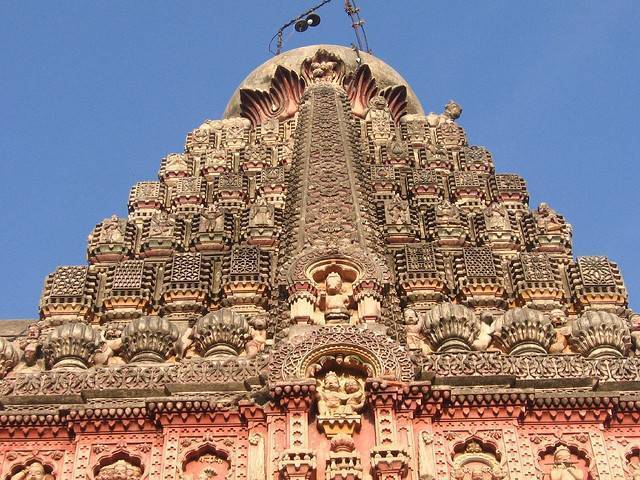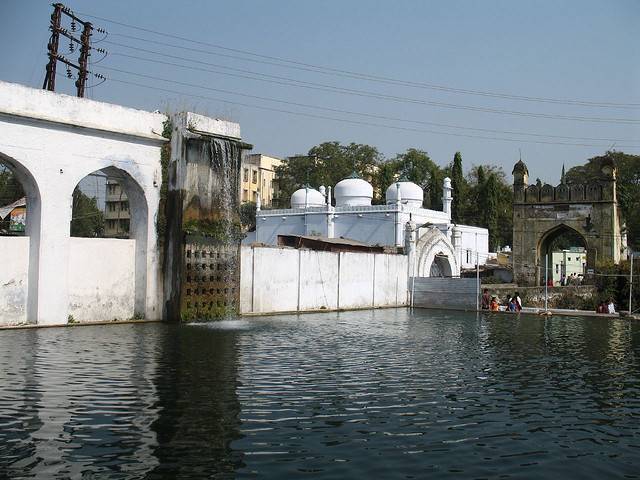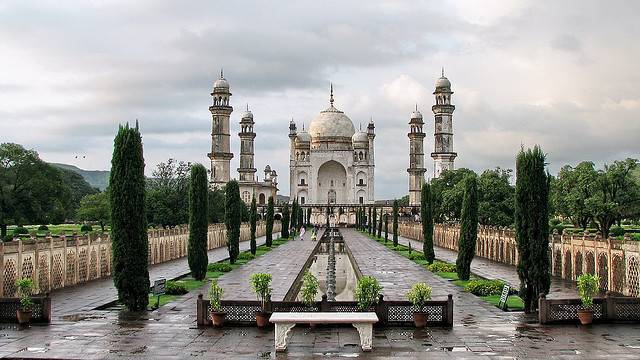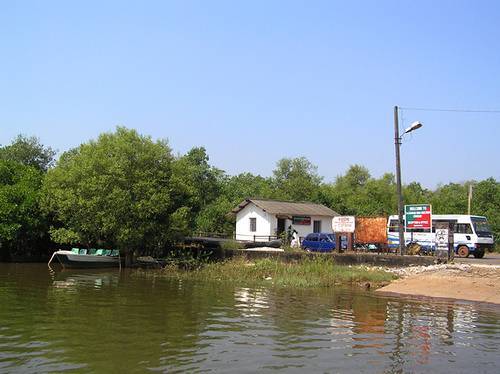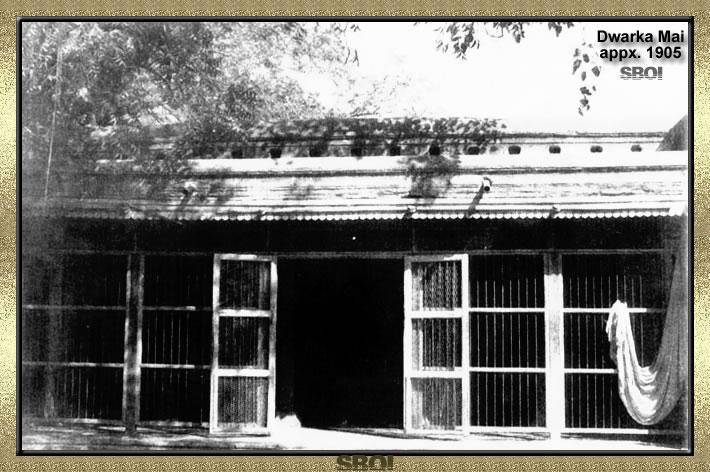Ellora Caves , Aurangabad
About Ellora Caves
Ellora Caves, a UNESCO World Heritage site located in Maharashtra, India, is one of the most remarkable examples of ancient rock-cut architecture. This sprawling complex of 34 caves, carved into the Charanandri Hills, is a testament to the religious harmony and artistic excellence of ancient India. Ellora is unique in that it houses monuments dedicated to Buddhism, Hinduism, and Jainism, making it a symbol of India's rich cultural and religious diversity.
Ellora Caves were designated a world heritage site in 1983, and the whole Ellora cave complex rivals those in the nearby Ajanta caves. 34 sections of cave spread of 2km of basalt cliff. The Ellora cave complex is celebration to Buddhist, Hindu and Jain religions. Dating back from 600AD, the caves served as a sanctuary to the monks who served their and painstakingly created the many carvings, idols and caves which decorate every aspect of the complex. Unlike Ajanta caves, Ellora caves were never lost. Ellora caves are 29 KMs from Aurangabad city.
Historical Significance and Background
The Ellora Caves were excavated between the 6th and 10th centuries AD during the rule of various dynasties, including the Rashtrakutas. The site served as a major religious center for all three faiths—Buddhism, Hinduism, and Jainism—during this period. The caves are not only a marvel of engineering but also a reflection of the spiritual devotion and artistic achievements of the craftsmen who created them.
Location
Situated approximately 30 kilometers northwest of Aurangabad city in Maharashtra, the Ellora Caves stretch over 2 kilometers along the Charanandri hills. Their significance lies in their representation of the religious harmony and tolerance that existed in ancient India. The caves serve as a testament to the coexistence of different faiths and the evolution of Indian rock-cut architecture over several centuries.
Brief History
The Ellora Caves were excavated between the 6th and 11th centuries CE, during the rule of the Kalachuri, Chalukya, and Rashtrakuta dynasties. The earliest caves are attributed to Buddhist monks, followed by Hindu and Jain excavations. This continued patronage by various dynasties and religious groups resulted in the diverse and rich artistic heritage visible today.
Cultural and Religious Significance
The Ellora Caves represent a unique confluence of three major Indian religions:
- Buddhism: The earliest caves reflect the Mahayana tradition and later Vajrayana influences.
- Hinduism: The Hindu caves depict various deities and mythological narratives, with the Kailasa Temple being the pinnacle of Hindu rock-cut architecture.
- Jainism: The Jain caves showcase intricate carvings and iconography related to Jain theology and philosophy.
This religious diversity underscores the pluralistic nature of Indian society during this period, with different faiths coexisting and often sharing artistic techniques and motifs.
Architectural Styles and Influences
The caves exhibit a range of architectural styles and artistic influences:
- Dravidian style: Particularly evident in the structural temples and the Kailasa Temple.
- Chalukyan style: Visible in some of the later Hindu caves.
- Pallava influence: Seen in certain sculptural elements and designs.
- Local Deccan style: Incorporated throughout the complex, blending with pan-Indian elements.
The evolution of these styles across the caves provides insight into the development of Indian art and architecture over several centuries. The Ellora Caves also showcase advanced engineering techniques, particularly in the excavation of the massive Kailasa Temple from a single rock.
Architecture and Artistic Grandeur
Buddhist Caves (Caves 1-12)
The Buddhist caves at Ellora are among the earliest structures, primarily dating from the 6th to 7th centuries. These caves served as monasteries (Viharas) and prayer halls (Chaityas). The most notable among them is Cave 10, known as the "Vishvakarma Cave" or the "Carpenter's Cave," featuring a grand chaitya hall with a seated Buddha statue. The intricate carvings and the large central stupa reflect the zenith of Buddhist architectural brilliance.
Hindu Caves (Caves 13-29)
The Hindu caves, constructed between the 7th and 9th centuries, are renowned for their elaborate sculptures and monumental scale. The crowning jewel of Ellora is Cave 16, the Kailasa Temple, dedicated to Lord Shiva. This massive rock-cut temple is the largest monolithic structure in the world, carved entirely out of a single rock. The temple is adorned with intricate carvings depicting various Hindu deities, mythological scenes, and ornate pillars, showcasing the pinnacle of Indian rock-cut architecture.
Jain Caves (Caves 30-34)
The Jain caves, dating from the 9th to 10th centuries, reflect the simplicity and asceticism central to Jain philosophy, yet they are adorned with intricate details. Cave 32, known as the Indra Sabha, is particularly notable for its fine sculptures, including depictions of Jain Tirthankaras and celestial beings. The detailed carvings and the precision of these structures highlight the advanced artistic skills of the craftsmen.
Cultural and Religious Harmony
Ellora Caves stand as a symbol of religious tolerance and harmony, where different faiths coexisted and thrived. The proximity of the Buddhist, Hindu, and Jain caves within the same complex underscores the syncretic nature of ancient Indian society, where cultural and religious plurality was celebrated.
Preservation and Restoration Efforts
Over the centuries, Ellora Caves have withstood natural elements and human activity. The Archaeological Survey of India (ASI) has undertaken various restoration and preservation projects to protect this invaluable heritage site. Efforts include structural reinforcement, prevention of water damage, and the careful restoration of damaged carvings to ensure that the caves remain a treasure trove for future generations.
Visiting Ellora Caves
Best Time to Visit
The best time to visit Ellora Caves is during the cooler months, from November to March, when the weather is pleasant. Avoiding the monsoon season is advisable, as heavy rains can make the terrain slippery and difficult to navigate.
Entry Fees and Timings
Ellora Caves are open to visitors every day except Tuesdays, from 6:00 AM to 6:00 PM. The entry fee varies for Indian and foreign tourists, and additional charges may apply for photography and videography.
How to Reach Ellora Caves
- By Air: The nearest airport is Aurangabad, located about 30 kilometers from Ellora. From the airport, one can hire a taxi or use public transportation to reach the caves.
- By Rail: Aurangabad Railway Station is the nearest railhead, well-connected to major cities in India. From the station, local transport options are available to reach Ellora.
- By Road: Ellora is accessible by road from Aurangabad and other nearby towns. Regular bus services and private taxis make the journey convenient for visitors.
Ellora Caves are a monumental testament to the artistic, religious, and cultural achievements of ancient India. Their grandeur and spiritual significance continue to inspire awe and reverence among visitors from around the world. Whether you are a history enthusiast, a spiritual seeker, or an art lover, a visit to Ellora Caves offers a profound and enriching experience that connects you with the timeless heritage of India.
Location & Places to Visit on Ellora Caves Map
View destinations and attractions nearby Ellora Caves, on an interactive map.
Freedom to make your own trip!
What you want, when you want and how you want.







